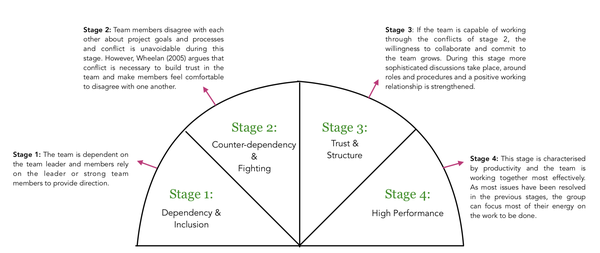How To Counter Manipulative Communication
In the last issue, I wrote about the manipulative behaviour I experienced recently. Here are some additional thoughts by a subscriber. And a few counter actions you could incorporate.
Hey there, I admit that the last issue felt a bit bleak. So I was delighted to have a small but fruitful exchange with subscriber Cornelia. She’s experienced similar situations but also rarely had immediate answers ready. However:
I think the first step should be to trust your intuition and to reflect on the experience. Emotions and trust are interconnected. If they’re missing, workplaces become empty, toxic zones – even more so if they’re not diverse enough. In that case, the urge for control and power takes over. Failures won’t be discussed but repressed; everybody tries to be perfect or – at least – to fit in. Problematic incentives take care of the rest.
I agree with her assessment but pointed out that everybody needs to understand what the problem is to be able to reflect. Do we even have the language to express it? Or are we trained to see ourselves as the problem?
Cornelia disagreed:
I think it’s too simple to say we lack the language to point out the problems. We’re experiencing dark times right now, and it can be dangerous to raise your voice. There are valid concerns about exposing yourself and being perceived as uncomfortable. I experienced that one could lose the job because of it.
Cornelia concludes that we’re exposed to countless reorganizations, cost-cutting, and perplexity towards digitization in the communication and marketing business. “But we must continue to be brave and name the things that concern us,” she says.
Understanding The Problem
Although everybody throws around buzzwords like bottom-up and employee empowerment, the manipulative behaviour and lack of trust root in leadership. Leadership has the leverage to introduce cultural change in an organization since they inherited the power.

However, leaders might refuse to do so because the transformation might result in power loss as it gets more evenly distributed amongst the team members. Susan A. Wheelan’s book “Creating Effective Teams” is a must-read to understand the team development. In a more populistic way, Simon Sinek describes the discrepancy between performance and trust. Sinek explains by the example of the Navy Seals that trust matters more than performance.
But you cannot force trusting relationships; they take time to form, as Wheelan points out in her book. Teams develop quite similar to humans themselves.

Source: Alexandra Schwartz
The key ingredient to even reach the fourth stage of group development is psychological safety. Google, a company insanely committed to data, also found this to be the case in its Project Aristotle. Once again, Sinek grasps the essence of psychological safety:

What a Trusting Team Feels Like
Psychological safety also means to be vulnerable. The power of vulnerability is something that Brené Brown researched deeply. And the impact of the vulnerability, empathy, and civility on business success was explored by Christine Porath. I highly recommend these two talks.
How To Kickstart Change
Now, these inputs from (popular) science are exciting but not very actionable. It takes a lot of courage to be vulnerable (although I only can emphasize its effectiveness in forming trust).
Fortunately, there are many tools around that facilitate the first steps towards a psychologically safe environment. For my personal experience, I can recommend the following:
Team Canvas
The Team Canvas helped me create a space where my team and I can talk openly about our shared values and goals and individual needs, expectations, strengths, and weaknesses. Important: Block enough time for the workshop to have deep conversations.
Telling Our Stories
Telling Our Stories is more of a one-off tool at the very beginning of a new team. In contrast to the Team Canvas, it creates a more personal understanding of the individual members.
Check-In / Check-Out
Daily check-ins and check-outs create an environment in which every team member gets heard. Besides the benefit of task transparency, this tool allows the people to share their current state of mind.
Stinky Fish
The Stinky Fish is a quick activity that’s best suited for project teams. Its focus is all about fears, anxieties, and uncertainties related to the project. Stinky Fish effectively enables openness within a group.
Reflection & Feedback Sessions
Too often, we’re absorbed by the daily business. I found it helpful to block time for dedicated feedback and reflection sessions.
For reflection, it is essential to talk from the I. We tend to speak in more general terms, and therefore exclude our feelings from the reflection.
For feedback sessions, I like to use the “I appreciate…” method because it’s short and framed with a lot of positivity.
I hope these approaches help you facilitate the change if there’s a need in your workplace. Thanks to Cornelia for allowing me to share her thoughts with you. Also, thanks to my Hyper Island fellows Ilona, Nika, and Paula, who shared their favourite tools.
Best,






